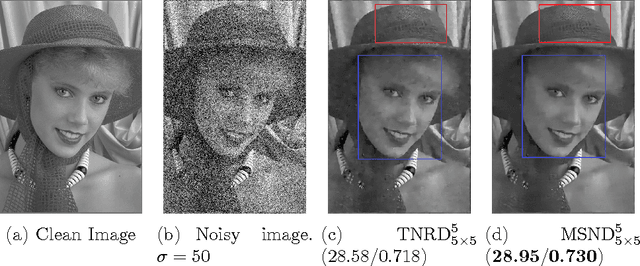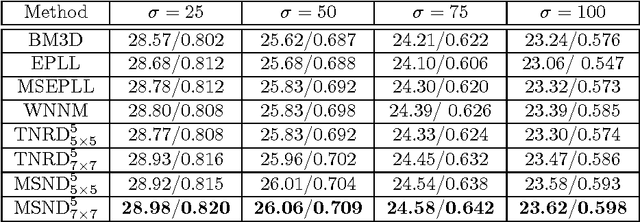Xuanyang Xi
Discriminatively Boosted Image Clustering with Fully Convolutional Auto-Encoders
Mar 23, 2017



Abstract:Traditional image clustering methods take a two-step approach, feature learning and clustering, sequentially. However, recent research results demonstrated that combining the separated phases in a unified framework and training them jointly can achieve a better performance. In this paper, we first introduce fully convolutional auto-encoders for image feature learning and then propose a unified clustering framework to learn image representations and cluster centers jointly based on a fully convolutional auto-encoder and soft $k$-means scores. At initial stages of the learning procedure, the representations extracted from the auto-encoder may not be very discriminative for latter clustering. We address this issue by adopting a boosted discriminative distribution, where high score assignments are highlighted and low score ones are de-emphasized. With the gradually boosted discrimination, clustering assignment scores are discriminated and cluster purities are enlarged. Experiments on several vision benchmark datasets show that our methods can achieve a state-of-the-art performance.
A Fast and Compact Saliency Score Regression Network Based on Fully Convolutional Network
Feb 24, 2017



Abstract:Visual saliency detection aims at identifying the most visually distinctive parts in an image, and serves as a pre-processing step for a variety of computer vision and image processing tasks. To this end, the saliency detection procedure must be as fast and compact as possible and optimally processes input images in a real time manner. It is an essential application requirement for the saliency detection task. However, contemporary detection methods often utilize some complicated procedures to pursue feeble improvements on the detection precession, which always take hundreds of milliseconds and make them not easy to be applied practically. In this paper, we tackle this problem by proposing a fast and compact saliency score regression network which employs fully convolutional network, a special deep convolutional neural network, to estimate the saliency of objects in images. It is an extremely simplified end-to-end deep neural network without any pre-processings and post-processings. When given an image, the network can directly predict a dense full-resolution saliency map (image-to-image prediction). It works like a compact pipeline which effectively simplifies the detection procedure. Our method is evaluated on six public datasets, and experimental results show that it can achieve comparable or better precision performance than the state-of-the-art methods while get a significant improvement in detection speed (35 FPS, processing in real time).
Image Denoising via Multi-scale Nonlinear Diffusion Models
Sep 21, 2016



Abstract:Image denoising is a fundamental operation in image processing and holds considerable practical importance for various real-world applications. Arguably several thousands of papers are dedicated to image denoising. In the past decade, sate-of-the-art denoising algorithm have been clearly dominated by non-local patch-based methods, which explicitly exploit patch self-similarity within image. However, in recent two years, discriminatively trained local approaches have started to outperform previous non-local models and have been attracting increasing attentions due to the additional advantage of computational efficiency. Successful approaches include cascade of shrinkage fields (CSF) and trainable nonlinear reaction diffusion (TNRD). These two methods are built on filter response of linear filters of small size using feed forward architectures. Due to the locality inherent in local approaches, the CSF and TNRD model become less effective when noise level is high and consequently introduces some noise artifacts. In order to overcome this problem, in this paper we introduce a multi-scale strategy. To be specific, we build on our newly-developed TNRD model, adopting the multi-scale pyramid image representation to devise a multi-scale nonlinear diffusion process. As expected, all the parameters in the proposed multi-scale diffusion model, including the filters and the influence functions across scales, are learned from training data through a loss based approach. Numerical results on Gaussian and Poisson denoising substantiate that the exploited multi-scale strategy can successfully boost the performance of the original TNRD model with single scale. As a consequence, the resulting multi-scale diffusion models can significantly suppress the typical incorrect features for those noisy images with heavy noise.
 Add to Chrome
Add to Chrome Add to Firefox
Add to Firefox Add to Edge
Add to Edge